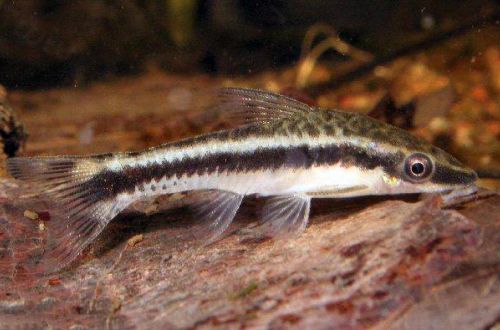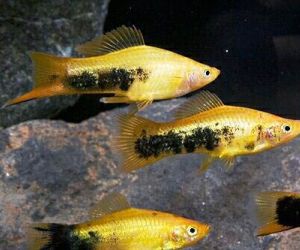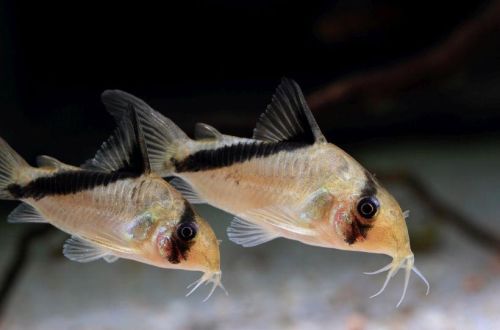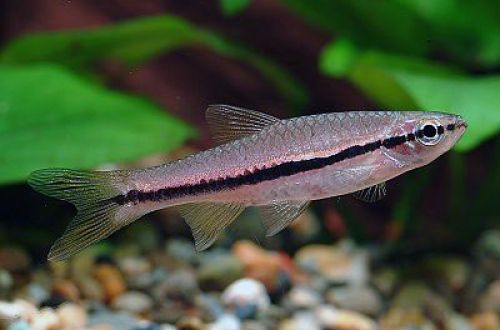
Otocinclus broadband
Otocinclus broadband, scientific name Otocinclus vittatus, belongs to the family Loricariidae (Mail catfish). This species is often used as an algae control tool in an aquarium. The fish does not differ in expressive coloring, but it does not catch the eye and effectively copes with its task.

Contents
Habitat
It comes from South America from a limited region of the Upper Amazon in Peru. Some sources indicate a wider range, covering the territories of Colombia and Ecuador. The fish lives in rivers and streams with dense aquatic vegetation. In this region, a kind of “floating meadows” is common, formed from numerous plants floating on the surface. They serve as a haven for many species of fish, including Otocinclus.
Brief information:
- The volume of the aquarium – from 40 liters.
- Temperature – 21-26°C
- Value pH — 5.5–7.5
- Water hardness – soft (1-12 dGH)
- Substrate type – any
- Lighting – moderate
- Brackish water – no
- Water movement is weak
- The size of the fish is up to 3.5 cm.
- Nutrition – only plant foods
- Temperament – peaceful
- Content in a group of at least 6–8 individuals
Description
Adult individuals reach a length of about 3.5 cm. Sexual dimorphism is weakly expressed. Females are only slightly larger (wider) than males when viewed from above. The mouth is shaped like a suction cup. A similar structure allows you to scrape off a layer of algae from the surface of stones, leaves, etc. The color is gray with a wide dark stripe stretching from head to tail. The belly is white.
Food
In nature, as mentioned above, the fish feeds on algae and along the way small insects and crustaceans that live in them. In a home aquarium, accordingly, the basis of the diet should contain plant components. For example, pieces of cucumber, spinach, zucchini and/or spirulina flakes. Occasionally, you can serve live or frozen food from bloodworms, brine shrimp, daphnia.
Maintenance and care, arrangement of the aquarium
The optimal size of the aquarium for a pair of fish starts from 40 liters. A wide variety of plants are used in the design: rooted and floating, with wide and narrow leaves. Driftwood and other shelters. Natural stained wood can be an excellent basis for the growth of algae – an additional source of food. The substrate doesn’t really matter. Otocinclus broadband keeps mainly above the ground, located on the leaves.
Favorable keeping conditions are achieved with high water quality with suitable hydrochemical values. A productive filtration system is desirable. It is worth giving preference to models that do not create excess flow. Mandatory procedures are the weekly replacement of part of the water with fresh water and regular cleaning of organic waste.
Behavior and Compatibility
Peaceful calm fish, lives in small groups. Compatible with other non-aggressive species of comparable size, such as Corydoras catfish, small characins, American cichlids, etc. Should not be housed with overly active fish.
Breeding / breeding
Breeding is possible, but difficult for beginner aquarists. Special problems arise with feeding fry. The breeding process is similar to the Corydoras, but unlike them, the eggs are scattered randomly.
Fish diseases
The main cause of most diseases is unsuitable living conditions and poor-quality food. If the first symptoms are detected, you should check the water parameters and the presence of high concentrations of hazardous substances (ammonia, nitrites, nitrates, etc.), if necessary, bring the indicators back to normal and only then proceed with treatment. Read more about symptoms and treatments in the Aquarium Fish Diseases section.





